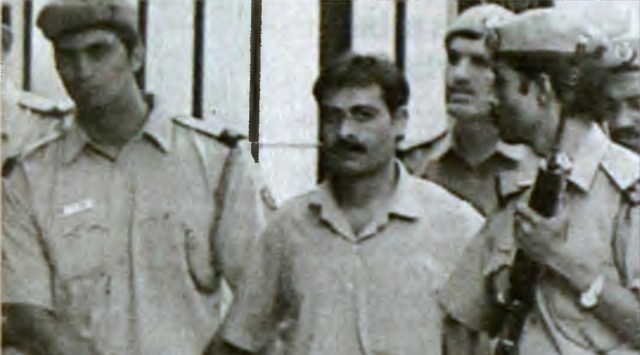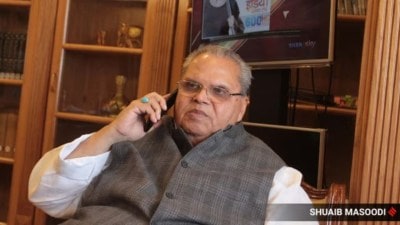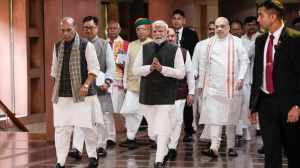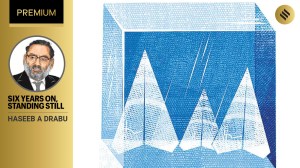Supreme Court affirms death penalty of LeT militant in Red Fort attack case. What happened on December 22, 2000?
Six LeT militants sneaked into Delhi's Red Fort on December 22, 2000, and opened indiscriminate firing on the guards of the 7th Battalion of Rajputana Rifles, killing three, including a civilian.
 Mohammad Arif coming out after a Delhi court awarded death penalty to him in the 2000 Red Fort attack case. (PTI)
Mohammad Arif coming out after a Delhi court awarded death penalty to him in the 2000 Red Fort attack case. (PTI)The Supreme Court Thursday dismissed a review petition by Lashkar-e-Toiba (LeT) militant Mohammad Arif alias Ashfaq against the death penalty awarded to him in connection with the 2000 Red Fort attack case.
So, what is the Red Fort attack and who were its victims? What did the probe find and how did the case proceed? A brief explainer.
Six LeT militants sneaked into Delhi’s Red Fort on December 22, 2000, and opened indiscriminate firing on the guards of the 7th Battalion of Rajputana Rifles, killing three, including a civilian. The army personnel present in the fort retaliated but the militants escaped.
The police identified the deceased as Abdullah Thakur, a civilian sentry, Rifleman Uma Shankar, and Naik Ashok Kumar. “Naik Ashok Kumar succumbed to injuries during treatment in the hospital hours after the incident,” a senior police officer said.
A first information report (FIR) was registered at the Kotwali police station based on the statement of Captain S P Patwardhan in which he states, “Two persons, armed with AK 56/47 rifles entered the Red Fort from the direction of Saleem Garh gate/Yamuna Bridge and they fired at the civilian sentry Abdullah Thakur. They also killed rifleman Uma Shankar and went inside the room in the unit lines close to the office complex and fired shots at Naik Ashok Kumar, who was seriously injured. They later entered the ASI Museum complex and fired in the police guard room located inside the Museum. In retaliation, the quick reaction team started firing at them and they managed to escape.”
After the incident, the police came to know through news channels that the LeT claimed responsibility for the shooting. “During the investigation, police found one polythene bag, containing cash and paper slip which, they believe, must have fallen out from the pocket of one of the attackers. They also seized currency notes and a paper slip. The police found one phone number and with the help of technical surveillance, they tracked down the accused,” an officer said.
Four days after the incident, the Delhi Police Special Cell arrested Pakistani militant Mohammed Arif alias Ashfaq and his wife Rehmana Yousuf Farooqui following an encounter in Southeast Delhi’s Jamia Nagar area. On February 20, 2001, the police filed chargesheet against Ashfaq and 21 others.
On September 11, 2001, a special court began trial against 11 out of 22 accused. Eight accused were declared proclaimed offenders, while three were killed in separate encounters. On December 4, 2002, charges were framed against eleven accused. Ashfaq and two others were charged with waging war against the Government of India. On October 24, 2005, the court convicted Ashfaq and six others. Four of the accused were acquitted.
On August 10, 2011, the Supreme Court upheld Arif’s death sentence and dismissed his appeal challenging the capital punishment awarded to him by the sessions court in 2005, which had been affirmed by the Delhi High Court.












